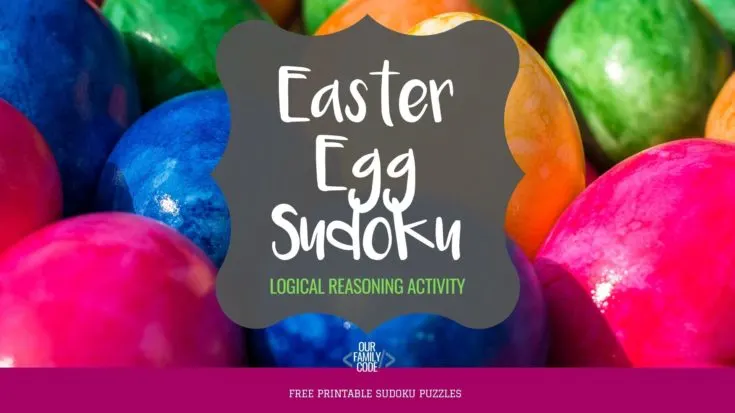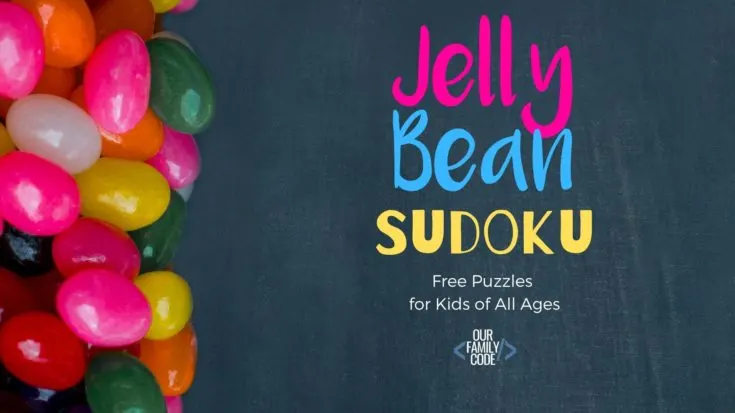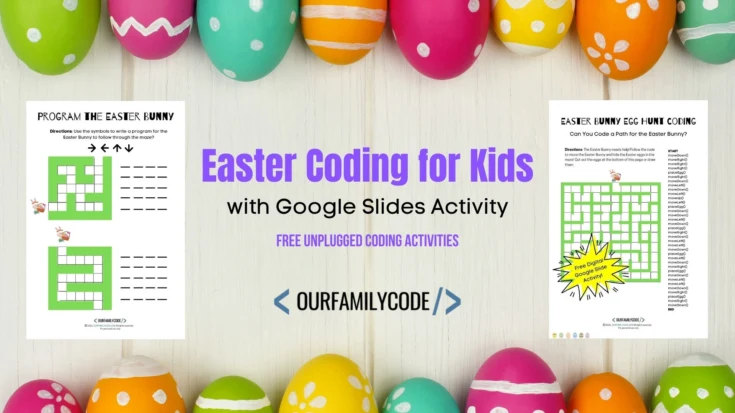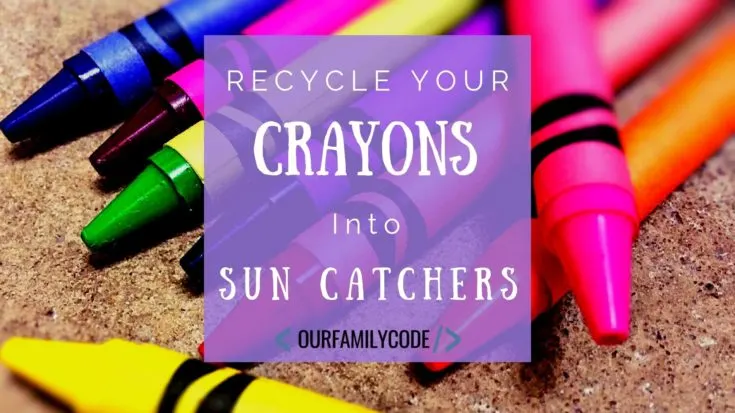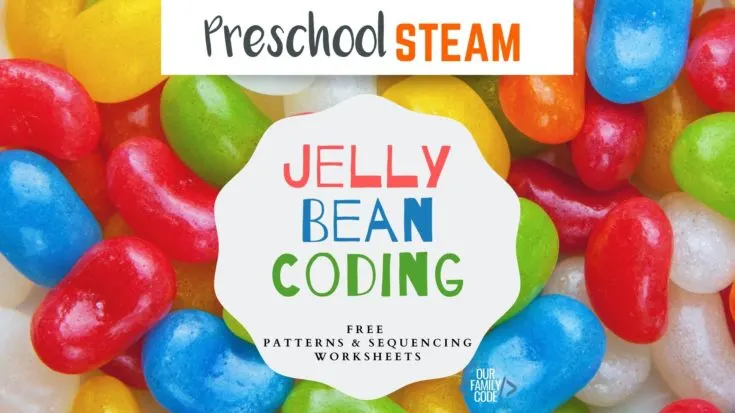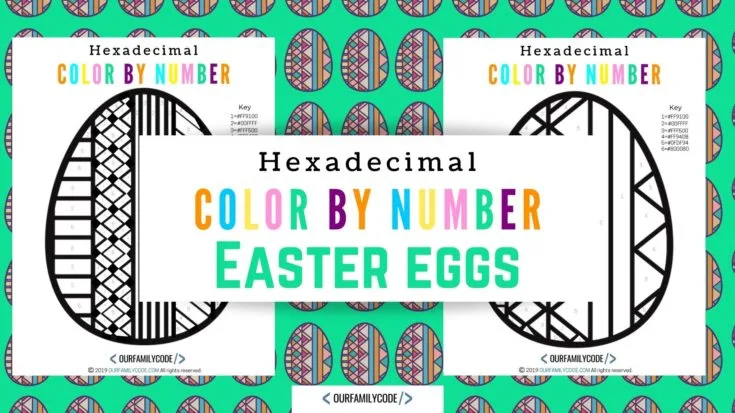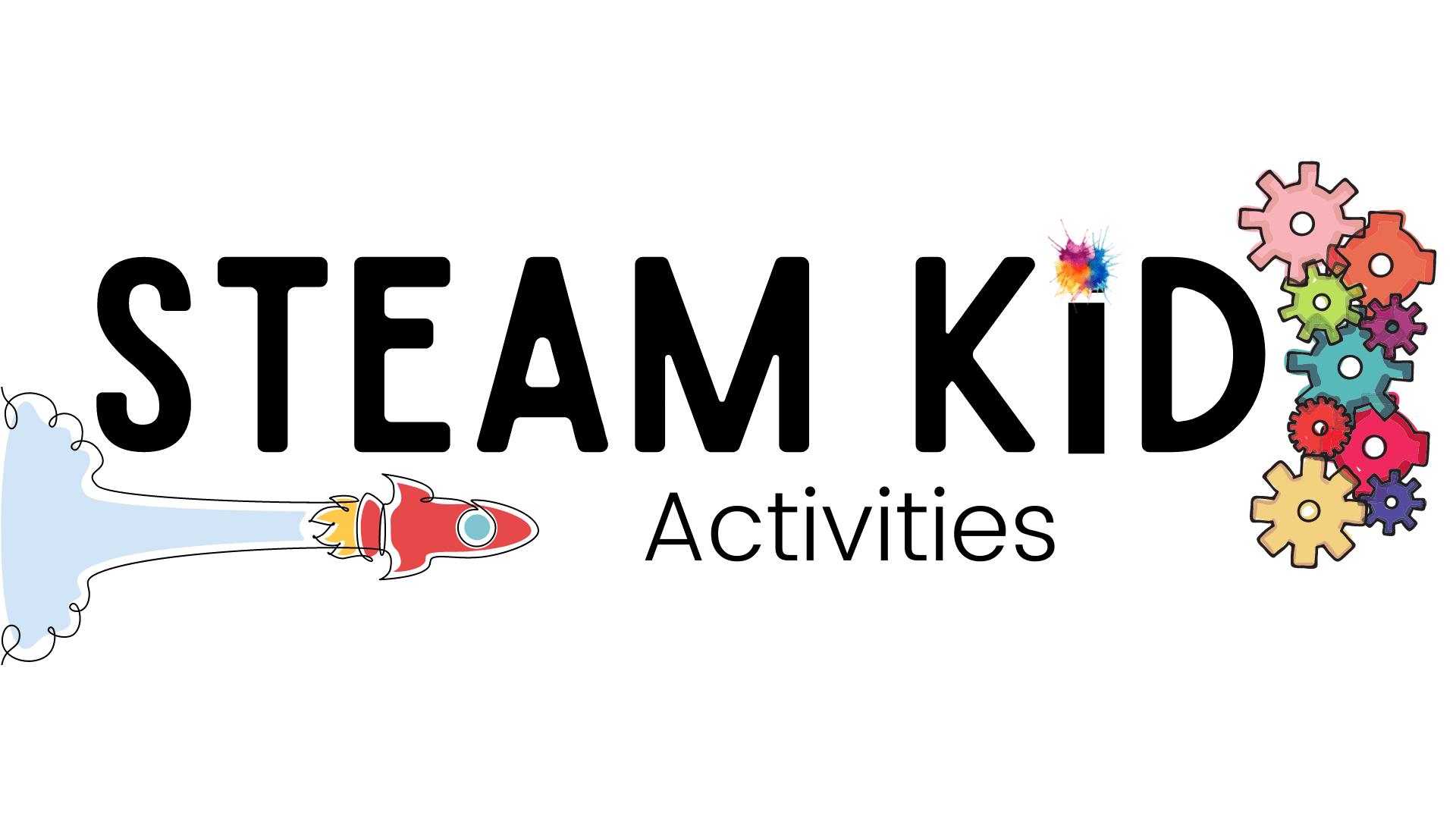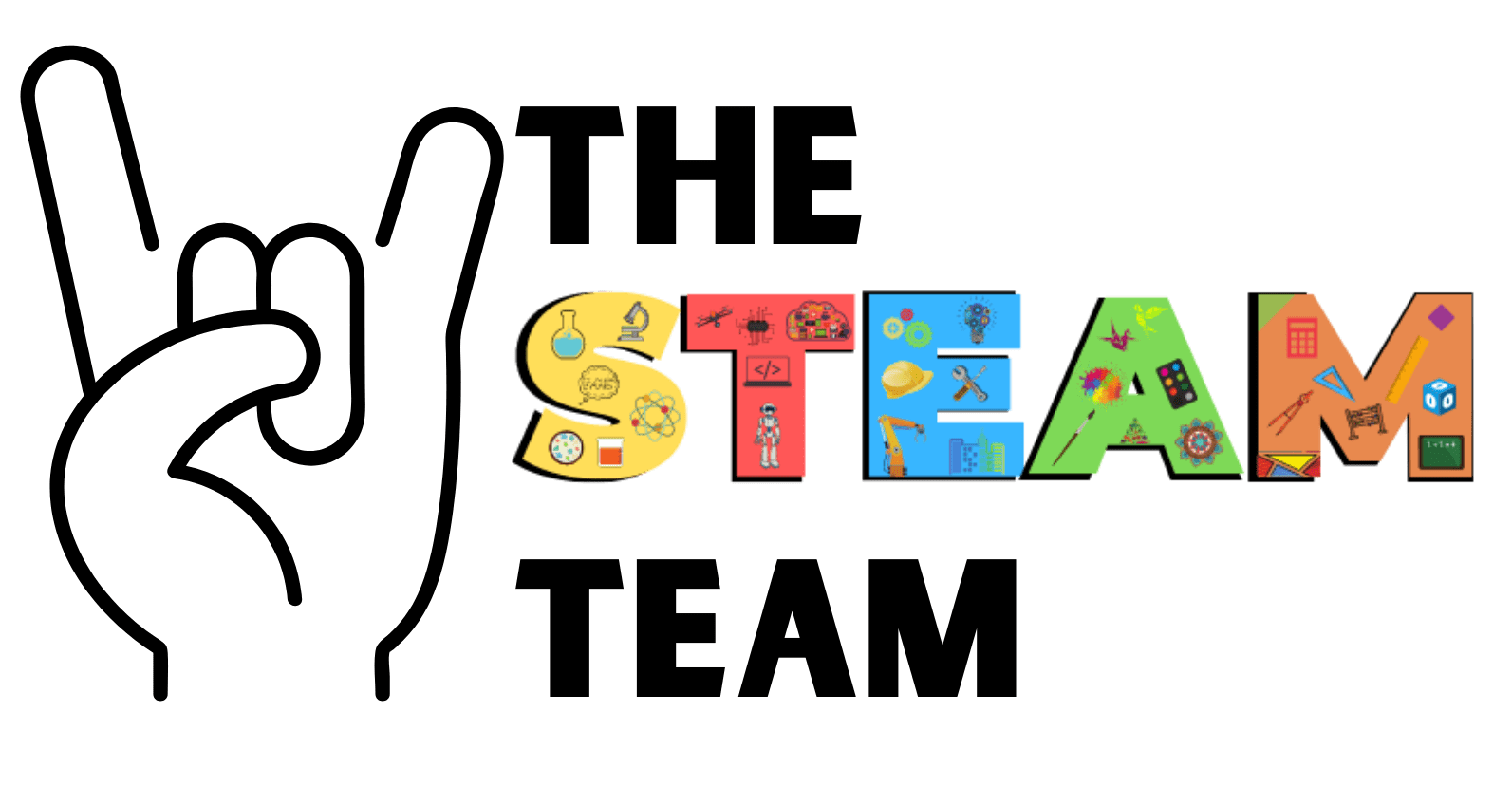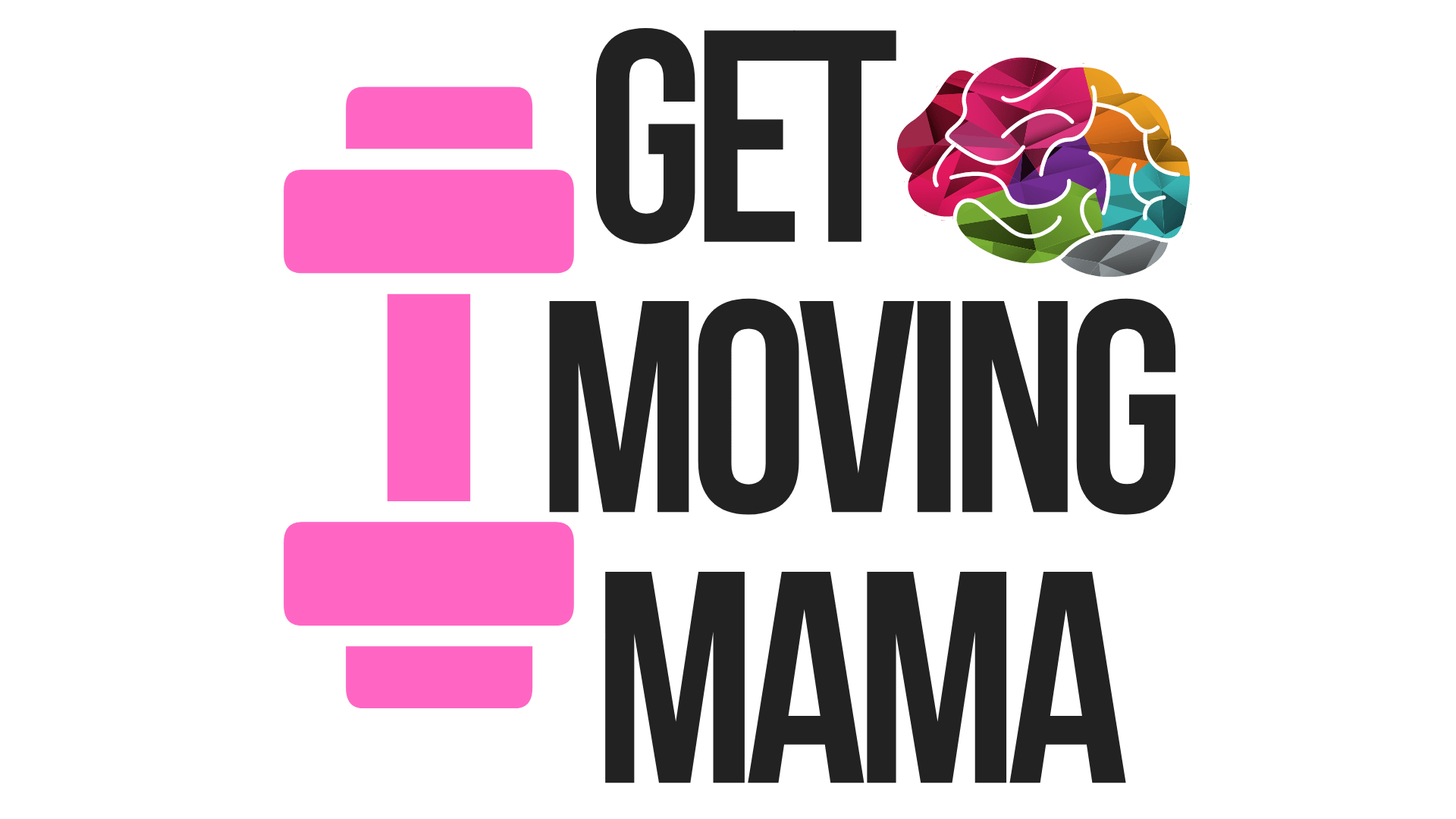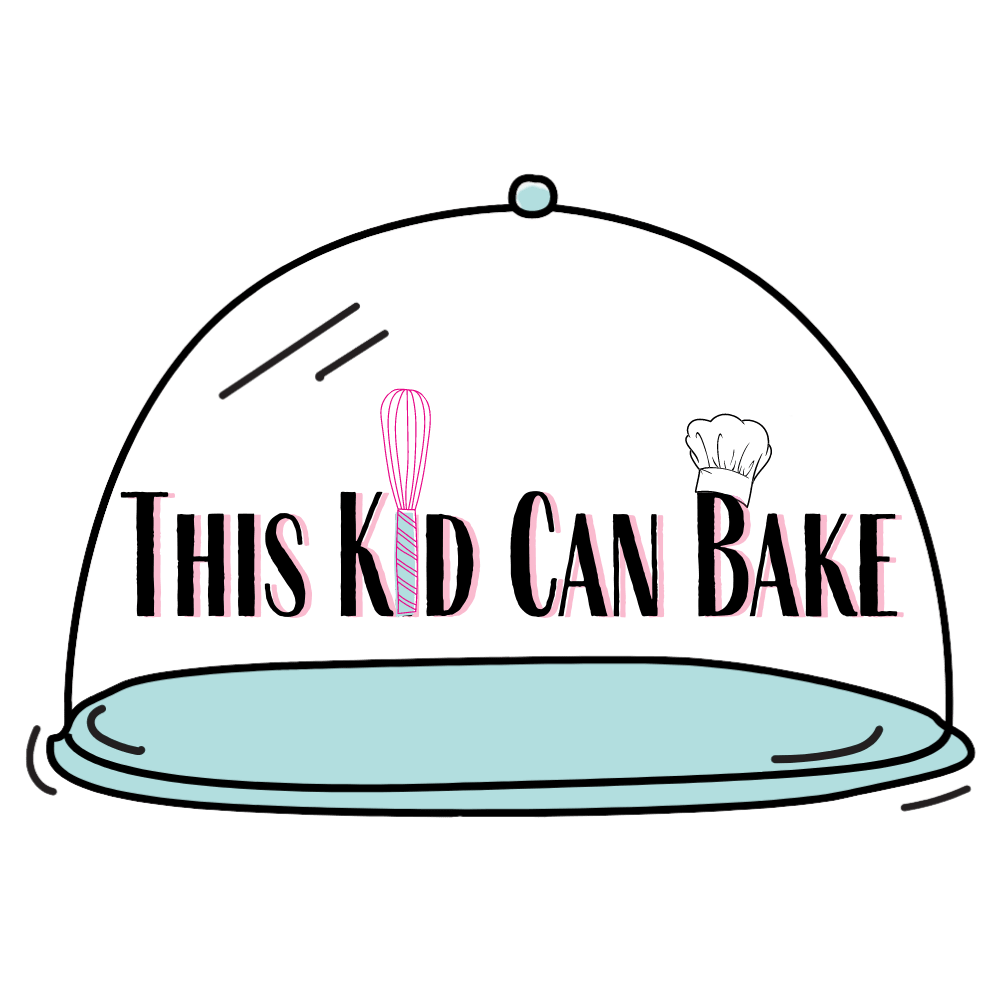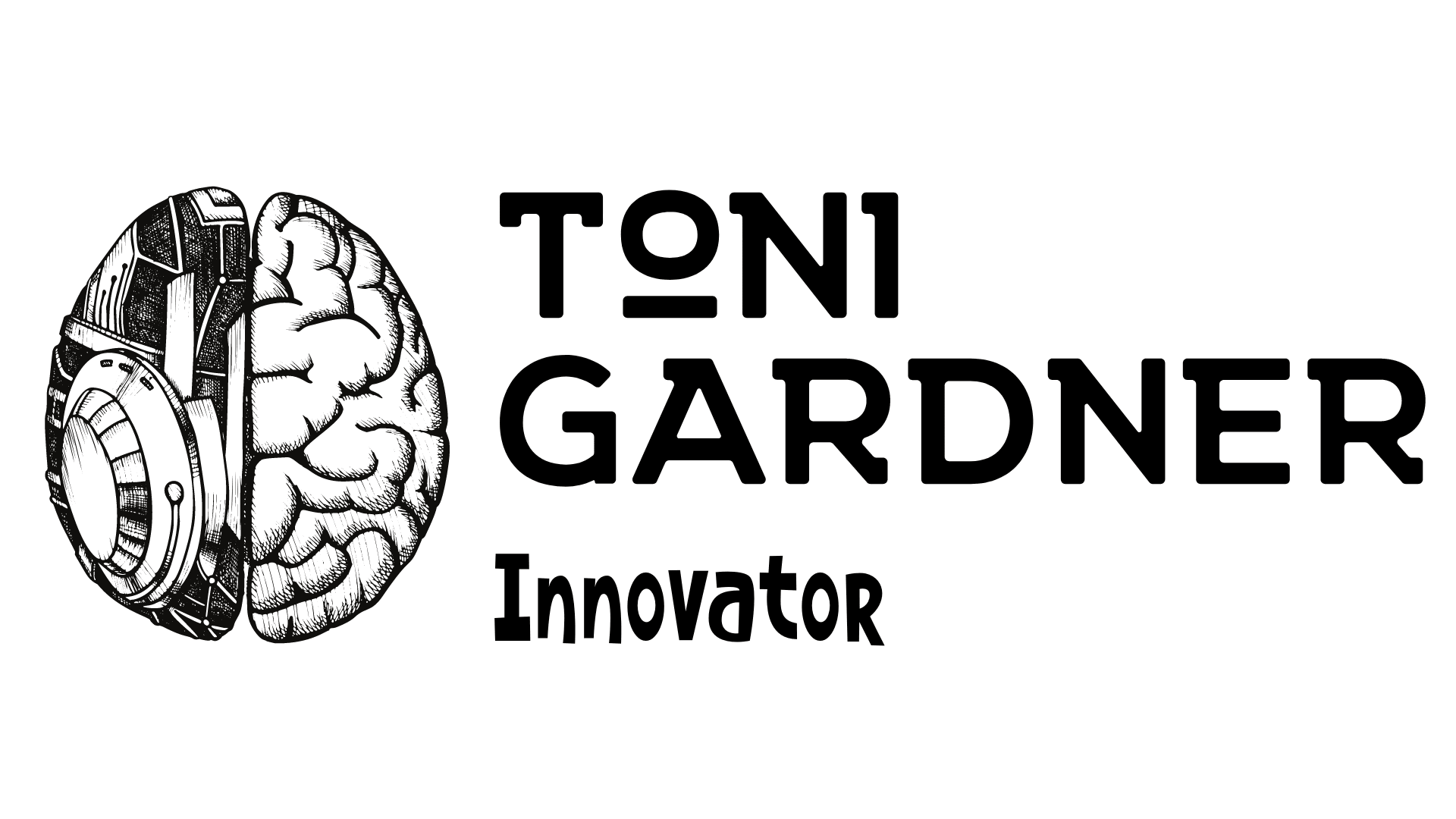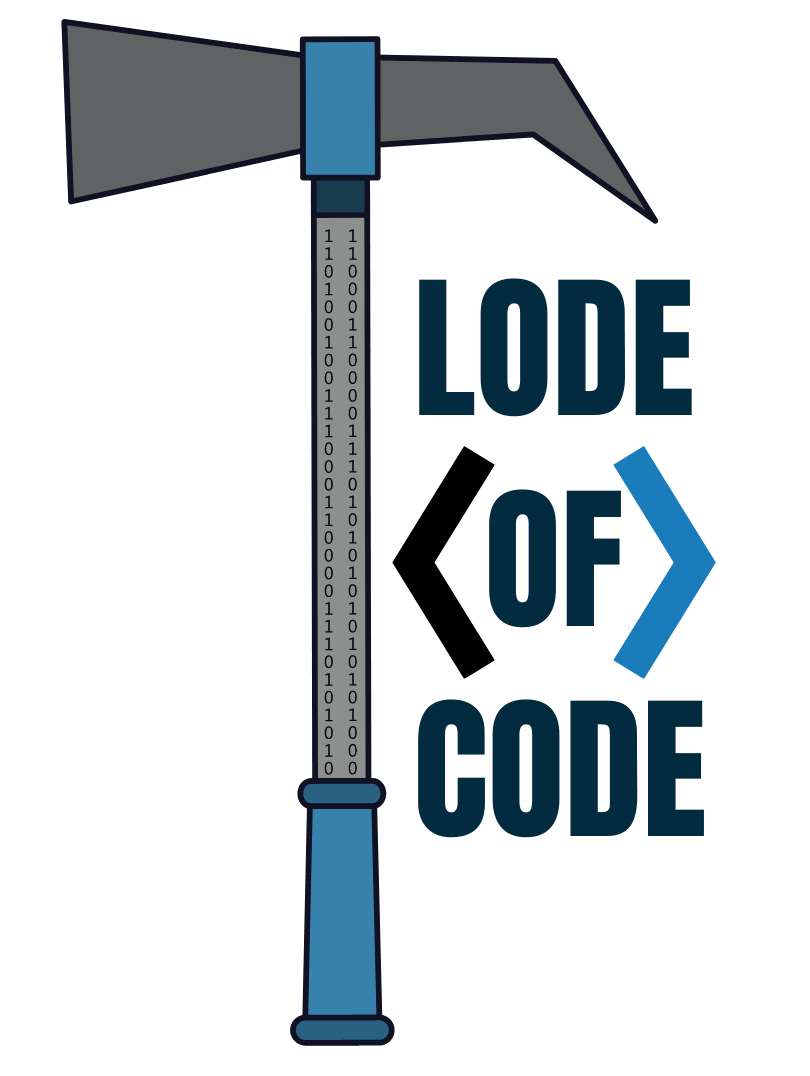This Easter egg algorithm art activity introduces basic coding skills by giving kids a set of rules and steps to follow to create unique designs for each egg!
An algorithm is a set of specific steps that you can follow to solve a problem. In programming, algorithms are used to create solutions to problems that can be reused, like when sorting or searching for something.
One way to teach your children about algorithms and unplugged coding is to have them create algorithm art drawings.
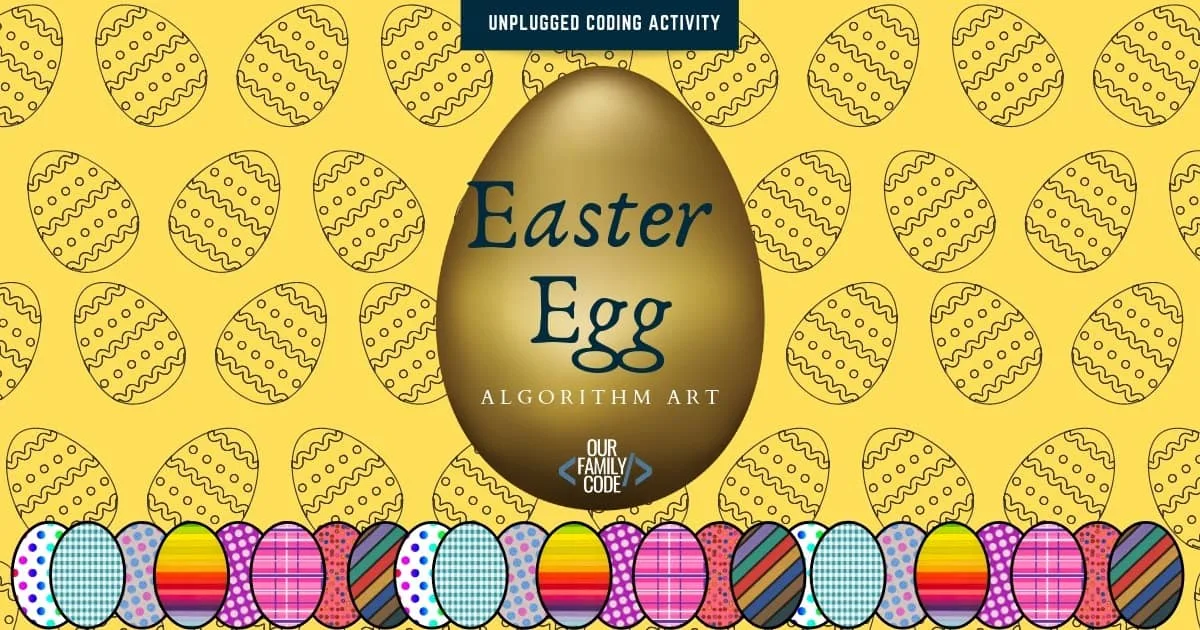
Easter Egg Algorithm Art Drawing – Follow the Rule
The Rule: Every Easter egg must be unique.
This means that each Easter egg design must be different. It doesn’t mean that the same line pattern cannot be reused. It just means that if horizontal lines, for example, are used twice then the colors must be different.
You’ll also enjoy: Hexadecimal Color by Number Easter Eggs
Easter Egg Algorithm Drawing – Use the Algorithms
There are two different algorithms in this activity. The first algorithm applies to the Easter eggs in the first row while the second algorithm applies to the second row.
Decorate each egg in each row according to the instructions in the algorithm. The Easter egg algorithms for this activity are:
Row #1
- Draw dots
- Use more than 4 dots
- Use at least 2 colors
Row #2
- Draw lines
- Use more than 3 lines
- Use at least 2 colors
These algorithms apply to each egg in the row noted. To work through the activity, children should follow the complete algorithm before moving on to another egg in that row.
After finishing the first row, the second row should be started. Every Easter egg should look different.
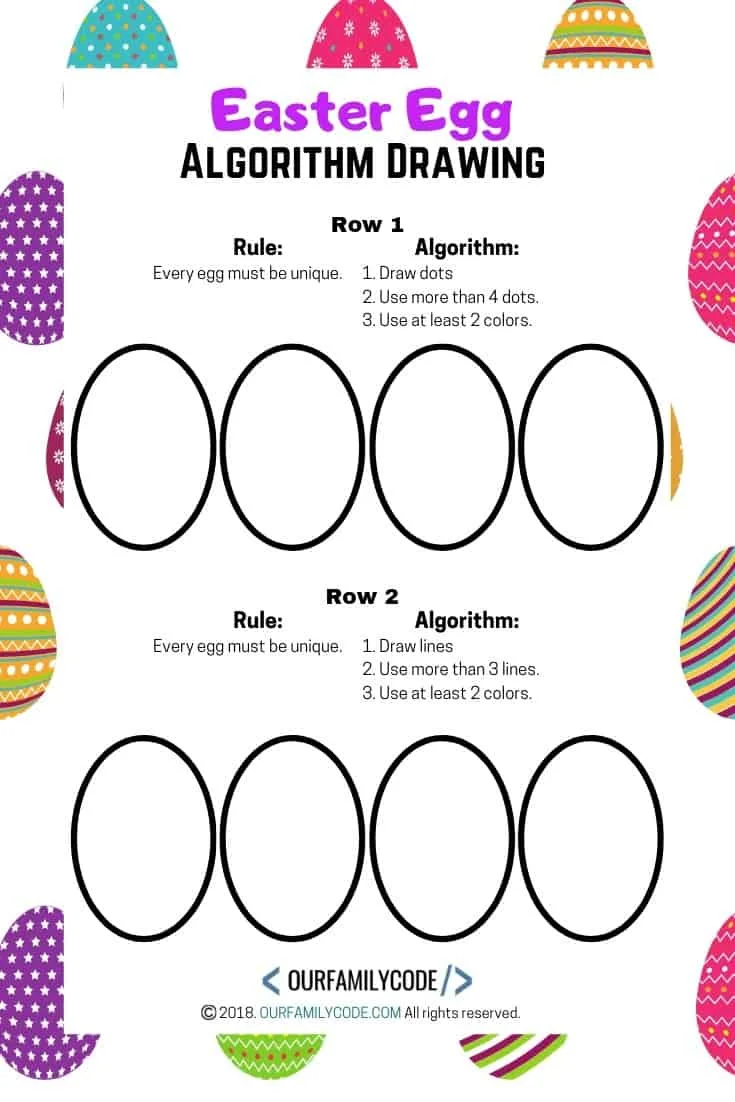
How to Solve the Easter Egg Algorithm Art Activity
Start with the first egg in the first row and follow the algorithm listed for row #1. There must be more than four dots used in the egg and there must be at least two colors used.
After you have designed all eggs in row #1, make sure that you have followed the rule and produced 4 different Easter designs.
Continue on to row #2 and follow the listed algorithm. There must be more than three lines used and at least two colors used in each egg. You’ll find an example of possible answers for this activity below.
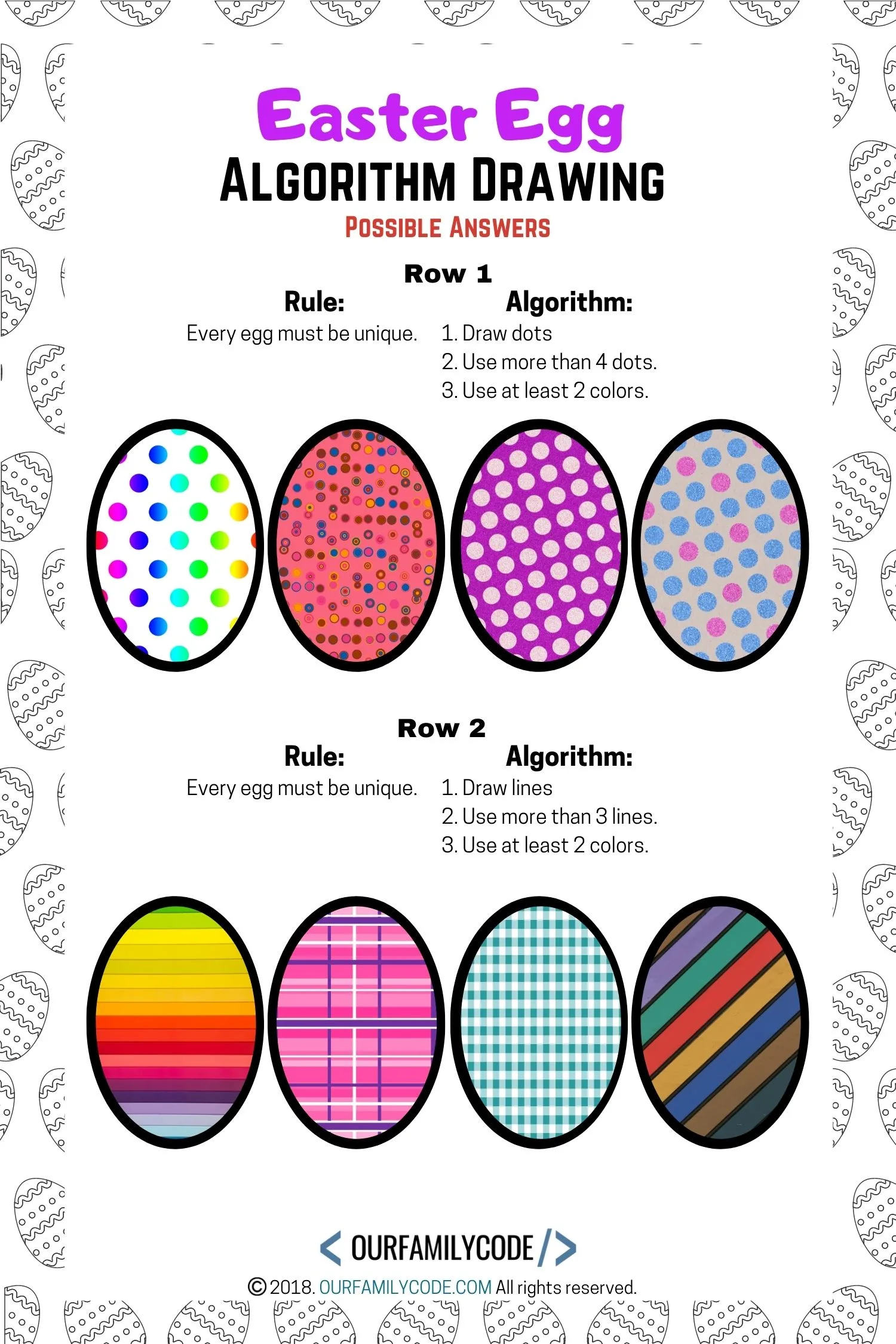
Share your Easter egg algorithm art designs!
Once you’ve decorated your Easter eggs, send us a picture of your egg designs on Facebook or Instagram!
WHY ARE UNPLUGGED CODING ACTIVITIES IMPORTANT?
Unplugged coding activities are designed to build the foundation of coding. These activities allow kids to participate in kinesthetic opportunities that help them relate the concepts they are learning to their own lives and teach children how to think logically about objects, how to break down large tasks into smaller tasks that are easier to complete, and how to identify errors.
Working hands-on makes coding concepts tangible and unplugged coding activities are ideal for young coders. Unplugged activities are great for classrooms or homes that don’t have access to the internet or a computer and ideal for young students who don’t have experience working with computers. It’s never too early to start teaching the foundation of coding.
WHAT IS COMPUTATIONAL THINKING?
Computational thinking can be used to solve problems in almost all areas of our lives and helps kids develop some pretty great life skills that can apply to a variety of situations. A computational thinker approaches problems by:
- Experimenting and playing to solve a problem that might have more than one possible solution
- Working together with others to reach a common goal
- Persevering when faced with a difficult problem
- Finding and fixing errors in complex problems
- Designing and making solutions for open-ended problems
- Understanding their own strengths and weaknesses
SOME BOOKS TO READ WITH YOUR ACTIVITY
We love incorporating books into our activities. Here are some great books about coding to read with your activity!
- Lauren Ipsum: A Story About Computer Science and Other Improbable Things by Carlos Bueno
- Who Says Women Can’t Be Computer Programmers? The Story of Ada Lovelace by Tanya Lee Stone
- Hello Ruby: Adventures in Coding by Linda Liukas
- How to Code a Sandcastle by Josh Funk
SIMILAR ACTIVITIES
- Coding the Way Unplugged STEAM Activity
- Get Your Kids Coding With Swift Playgrounds
- Get Your Kids Coding With Osmo
- Crack the Code & Binary Code 5-Bit Challenge
PIN THIS IMAGE TO SAVE THIS ALGORITHM EASTER EGG COLORING ACTIVITY
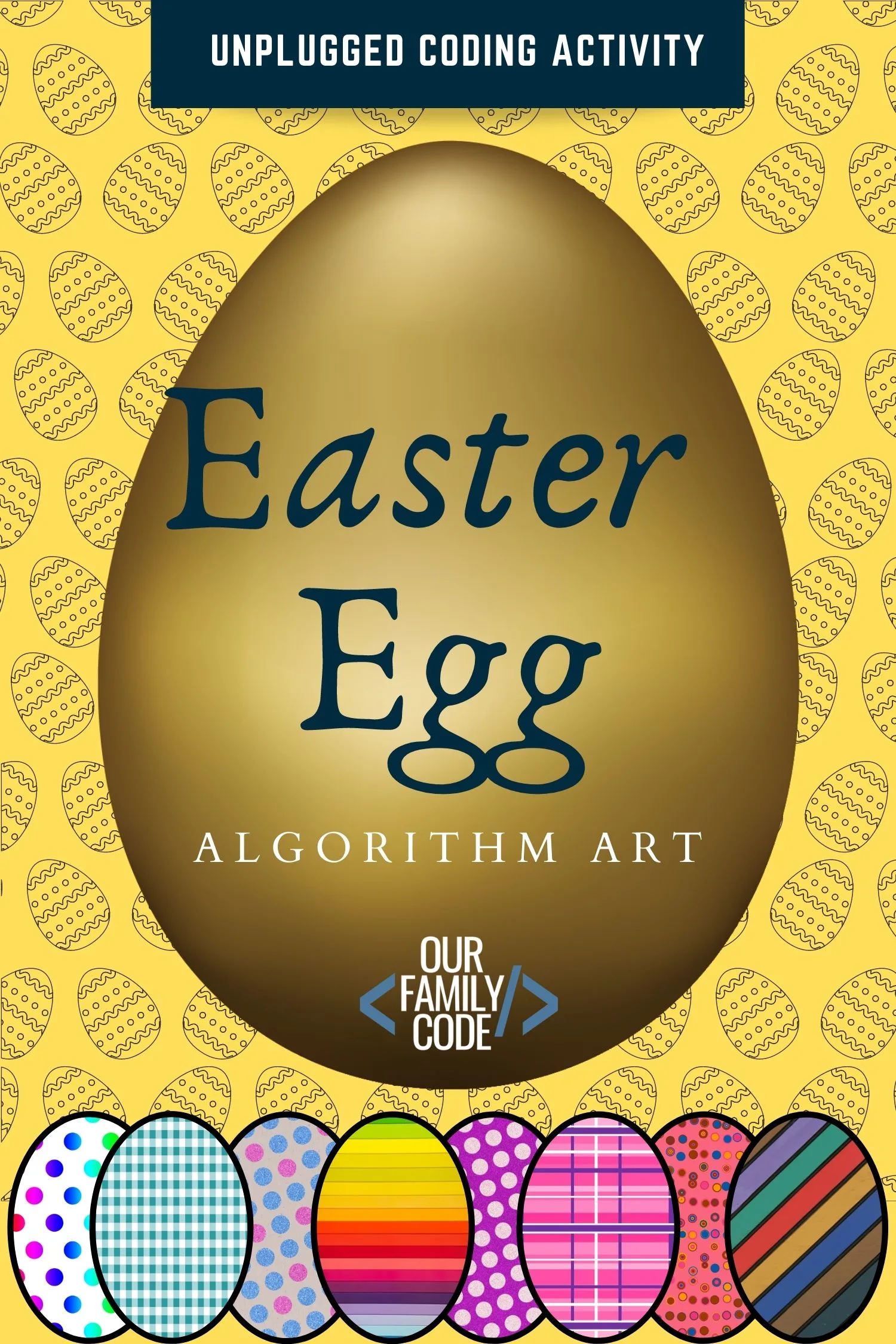
Easter STEAM Activities for Kids
Find more Easter STEAM activities for kids!
Easter Egg Sudoku Logical Reasoning Puzzle
This Easter Egg Sudoku activity is a way to introduce kids as young as preschool to the rules and the use of logical reasoning to solve a problem.
Jelly Bean Sudoku Logical Reasoning Activity for Kids
Work on logical reasoning and colors with this Easter Jelly Bean Sudoku unplugged coding activity for preschoolers to 5th graders!
Easter Ten Frames Jelly Bean Math Activity
A great activity for preschool and kindergarten aged kiddos is working hands-on with objects to learn addition and subtraction. We decided to work with candy corn for our activity, but you can use other objects such as m&ms, fruit loops, popcorn, legos, etc.
Easter Bunny Egg Hunt Coding for Kids
This elementary egg hunt coding activity is a great Easter-themed way to introduce the basics of computer programming to kids in Kindergarten through 5th grade.
Free Printable Easter Worksheets for Kids
There may still be snow on the ground here in Wisconsin, but Spring is quickly approaching! To celebrate, here are some free Easter worksheets for kids! These worksheets include a few different exercises for kids of different learning levels.
Repurpose Crayons: Make Sun Catchers from Crayon Shavings
Repurpose crayons into beautiful sun catchers from crayon shavings! Use crayon shavings to make Easter Egg sun catchers with this repurposed crayon activity perfect for Easter.
Preschool STEAM Easter Sequences Coding with Jelly Beans
Grab these Easter Sequences Preschool Unplugged Coding Activity worksheets to practice sequencing today and finish writing sequences with jelly beans!
Hexadecimal Color by Number Easter Eggs
This Hexadecimal Color-by-Number Easter Egg worksheet is a great introduction to how HTML color coding works and other basic coding skills!
Meet Toni, the Maker Mom behind Our Family Code

Hey there, I’m Toni! I’m a software engineer and Maker Mom that finds my joy in unleashing my children’s curiosity by exploring STEAM concepts with my fantastic five!
When I’m not chasing toddlers or raising tweens, you can find me tearing things up and putting them back together over here at Our Family Code.
I am the owner and content creator of multiple educational websites designed to increase access to STEAM & STEM education with a focus on teaching computer science and coding to kids of all ages!
You can also find out more about me by visiting ToniGardner.com!
